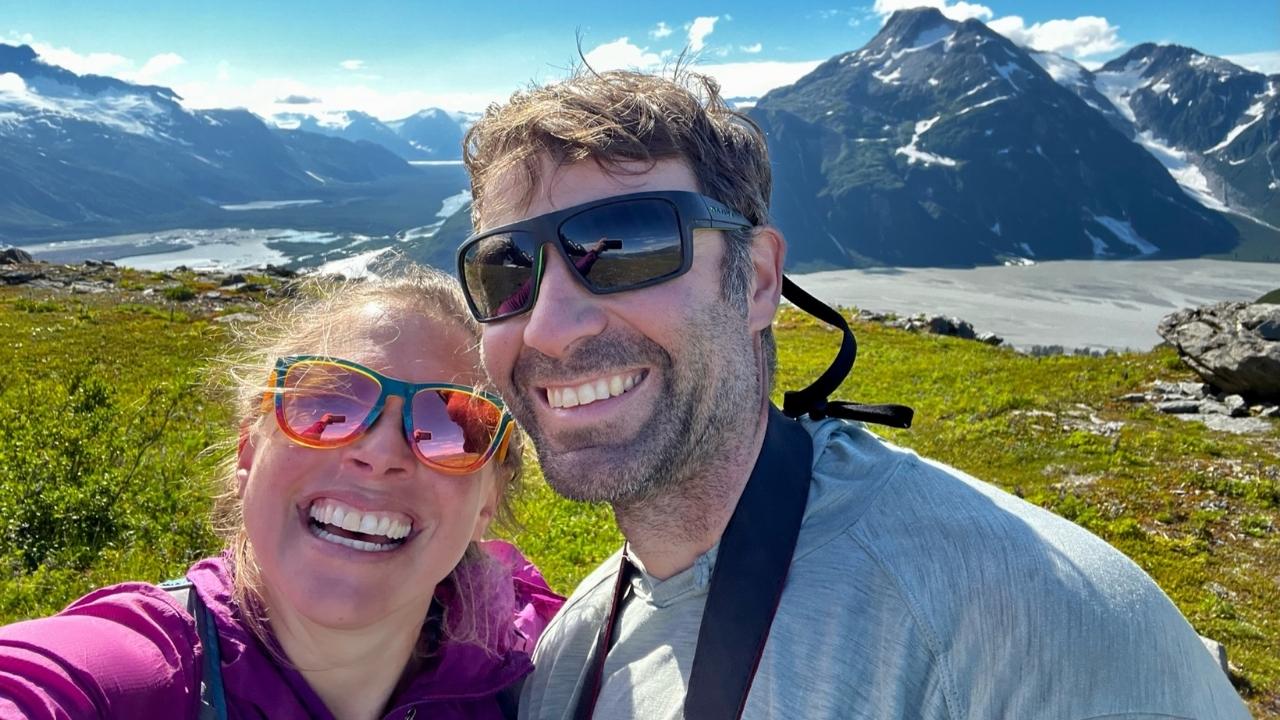Titration in Practice: A Backpacking Trip in the Baird Mountains
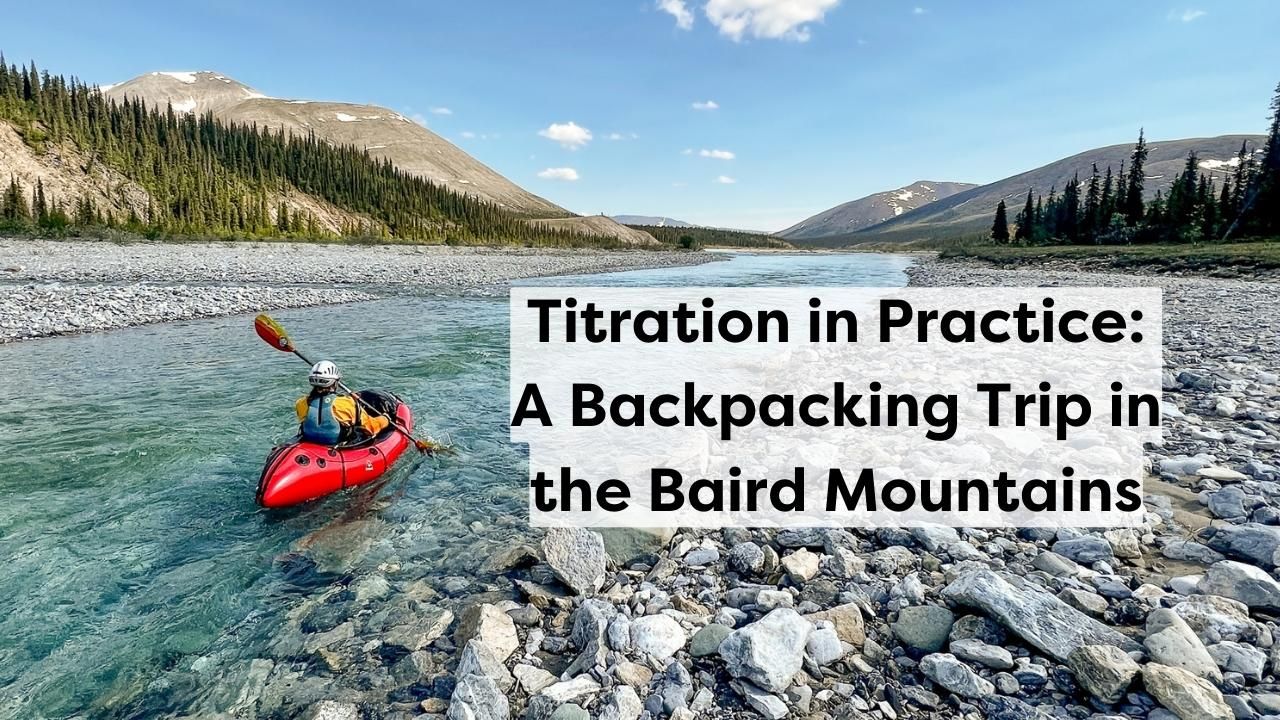
Alaska’s Baird Mountains
For the last several summers, my husband Luc and I have been taking three-week long outdoor backpacking trips through the wild parts of Alaska. We look forward to this time as a way to both restore our spirits from our busy lives and connect with each other. These trips are a foundational piece of our relationship and a time we both cherish.
This past June, our big backpacking trip took us through Alaska’s Baird Mountains where we did some hiking and paddling. We had some magical moments plus some big learnings.
Planning Our Trip
Right off the bat, we knew this trip would look a little different from our past summer trips. As we’ve been navigating fertility challenges, I wasn’t sure how my body would feel when the trip came around. We knew we needed to build a lot of flexibility into our trip plan.
To stay adaptable, we designed a basecamp-style trip. This way, we could flex the total mileage and intensity of our trip depending on how we were feeling. This ended up being so key!
The rough plan we came up with included a backpacking/packrafting float loop from our landing zone, a day to move our basecamp, then two backpacking loops from the new camp. Finally, we’d end the trip by floating about 50 miles down the Agi River. You can read more details about planning this trip in Luc’s trip report along with his perspective and experiences.
When Things Don’t Go According to Plan
Recalculation on the Omar
Our flight into the Baird Mountains was stunning – and we were impressed by two things:
- 1) there wasn’t much water at all in the Agi, which meant we might not be able to float out as easily as we’d planned.
- 2) The mountains and ridges looked GREAT for walking - not much brush at all and terrain that looked like ideal hiking ground.

The low water started us re-calculating our trip plan… if we couldn’t float the Agi back out, we’d need a lot more time to hike those same miles.
In the end, recalculation ended up being the theme of the trip. What had started out as a tickle in my throat in town (at-home COVID test was negative) turned into a full-blown sickness requiring a few tent days before I was up for travel again.
Once I was recovered enough to hike, we adapted a 25 mile hiking/packrafting loop on the Omar River from 2-days into 4-days – bringing enough food & fuel along to accommodate half days of travel and my half-healthy body.
This slower pace ended up working out pretty well. I started slow but recovered a bit more each day and by the time we made it back to our cashe I was feeling pretty healthy. And the Omar was just gorgeous – beautiful turquoise water, ideal swimming conditions, a neat bear encounter, and an incredible ridge & valley hiking on the return.
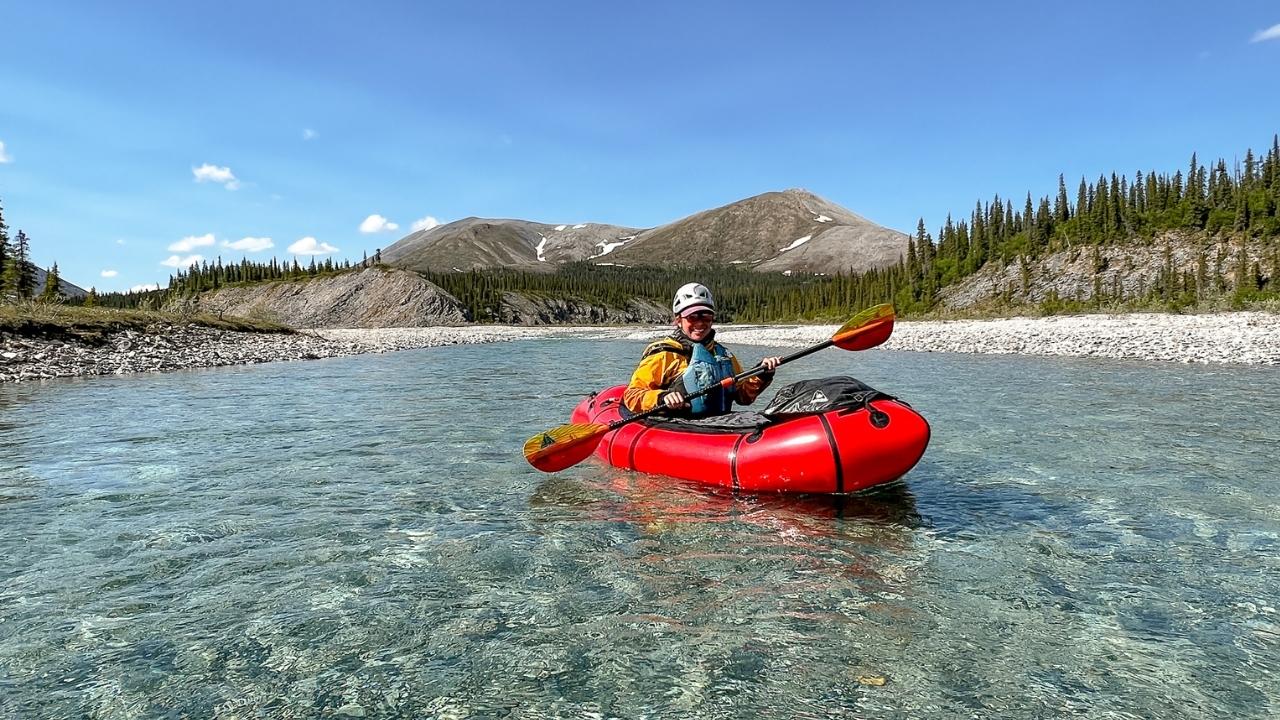
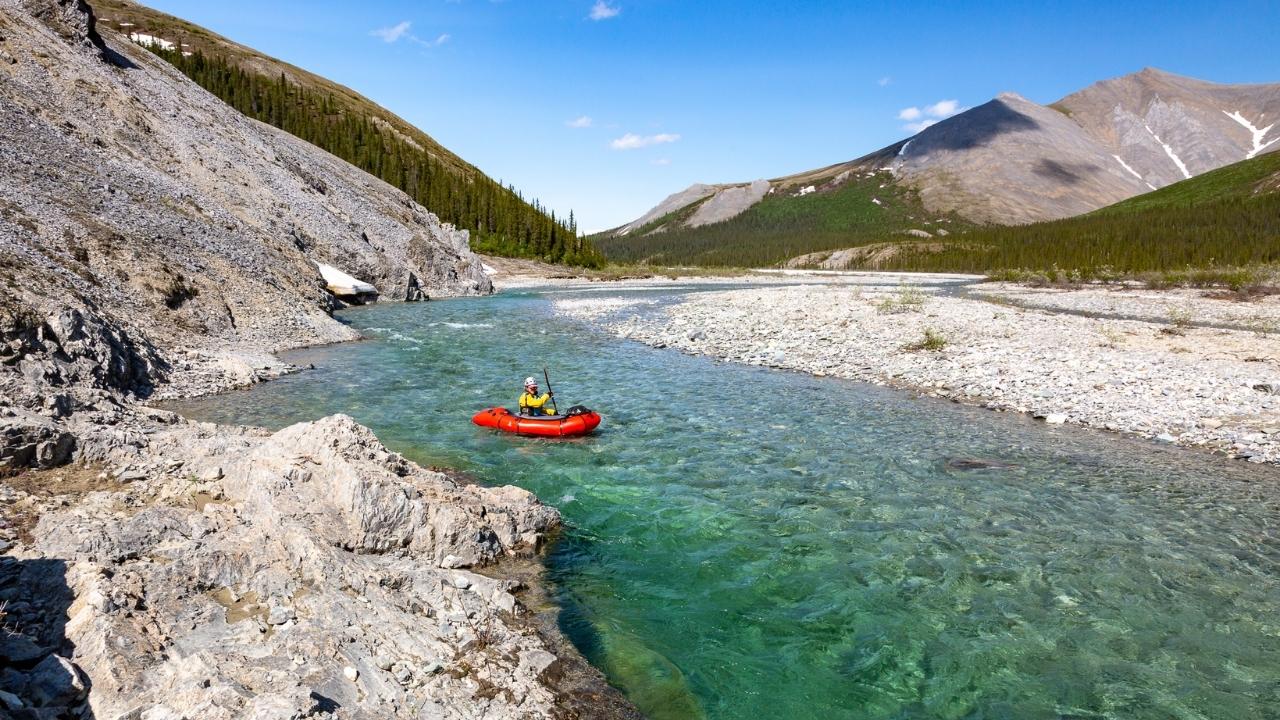
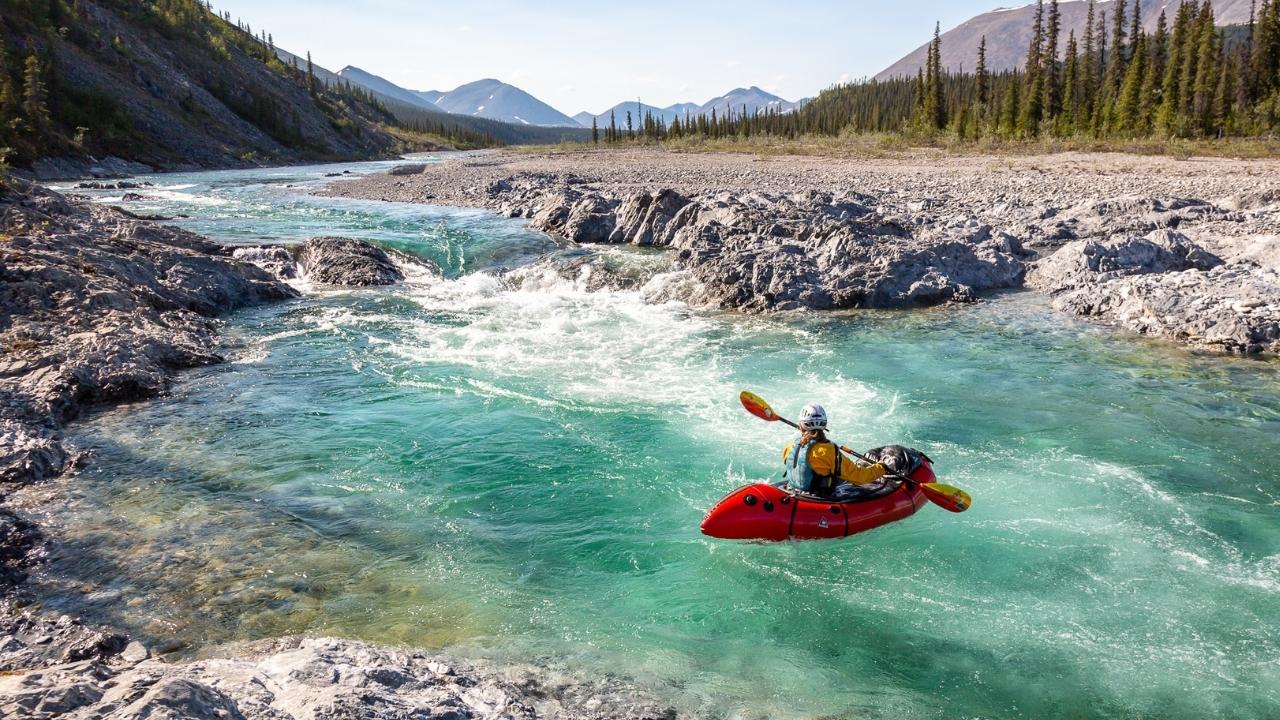
Moving and Resting
When we got back from our four-day outing, we moved our basecamp. Then we hit another speed bump: Luc got sick with the same bug I had. We spent another two days in the tent while he recovered. That meant we had to scrap the other two backpacking loops we had planned. It was such a bummer to miss out, but this whole trip was all about staying flexible when things didn’t quite go how we planned.
Exit on the Agi
While we were in the tent for Luc’s sick days, a rainy storm passed through the area. The rain raised the water level of the Agi right on time! We were so grateful not to have to rethink this part of our trip, too. After hiking only a few miles along the river, we hopped in our packrafts and started our float down this unbelievably gorgeous river.
What we noticed about dealing with sickness and changing plans was the mental toll. Instead of following Plan A like many of our trips, we kept having to rethink and shift our plans. It was a lot of problem solving and decision-making. While our trip wasn’t as physically tough as other trips, this time we had lots of mental challenges to negotiate instead.
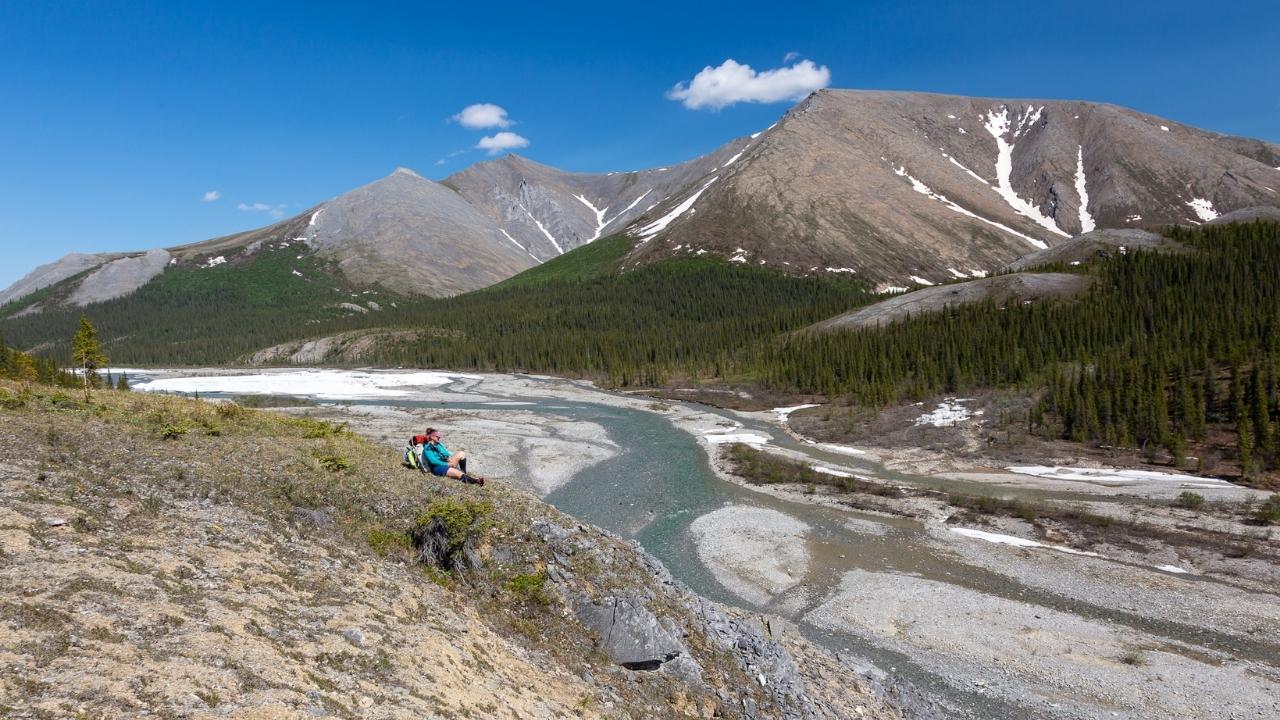
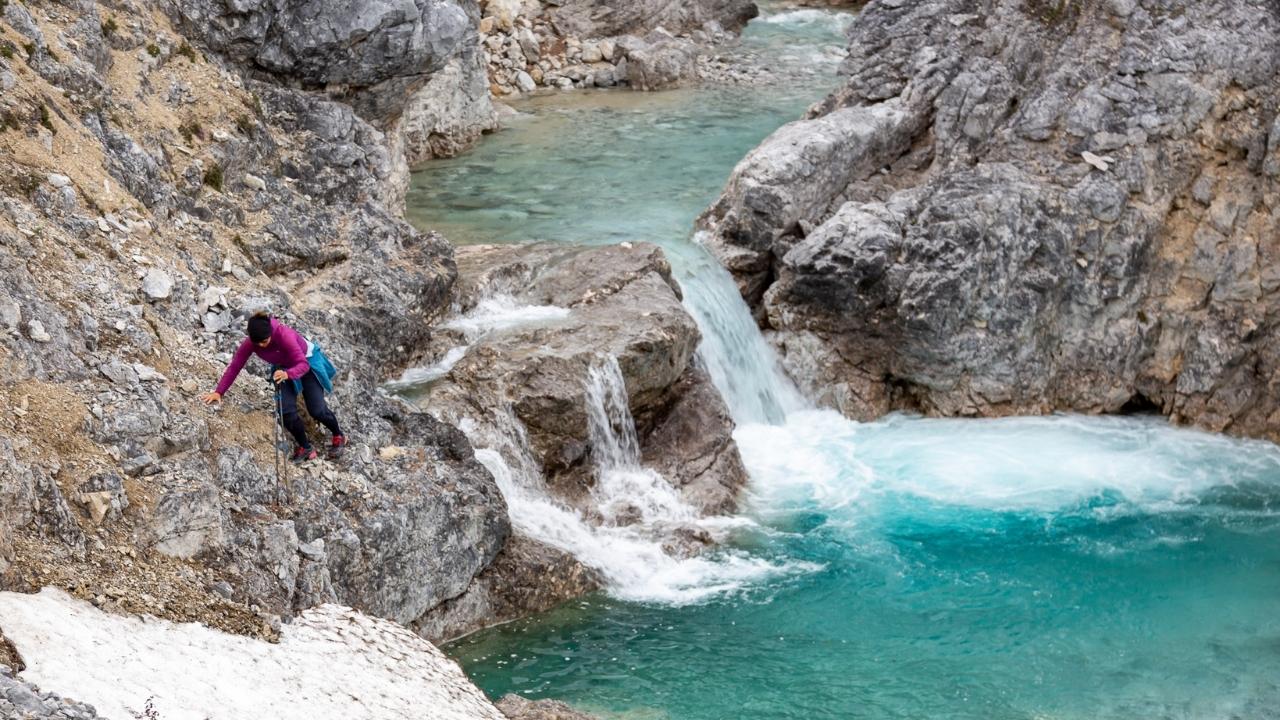
Mindset Matters
Titration in Action
When we’re recovering from sickness, it can be so hard to know if movement will help or hurt – I totally felt this dilemma on this trip. I talk a lot in Mind & Mountain’s training programs about titration: it’s a way of slowly adding more challenge to find a sweet spot that doesn’t overwhelm our system. I ended up putting those concepts into practice when I had to figure out how to still enjoy my backpacking adventure without overdoing it.
For example, my first short half-day hike was a little experiment to see how my body responded to a little movement. When that shorter hike felt doable but also tiring, titration told me that jumping straight into full days of hard travel would be too big of a step. Instead we created a smaller step, and we planned half days of travel.
During the days we were hiking and paddling, it was extra important for me to tune into how I was feeling. I noticed that how I was feeling one moment didn’t mean much about how I’d be feeling an hour later. My recovery was not exactly a straight line, and I had to be gentle with myself when I felt good one moment and then grumpy and drained the next. Taking my recovery moment by moment and riding those waves was key.

Awe as an antidote
Throughout the trip, I noticed that my ability to be playful and appreciate my surroundings really tracked with how I was feeling. The moments where I was in my window of tolerance, I had the space to be curious and in awe of the natural beauty we were immersed in. I was more engaged with nature: I was taking more photos and noticing fun things around me. But during the moments where I was close to the edge of my limits, my focus closed in and it was harder to access those playful or grounded feelings.
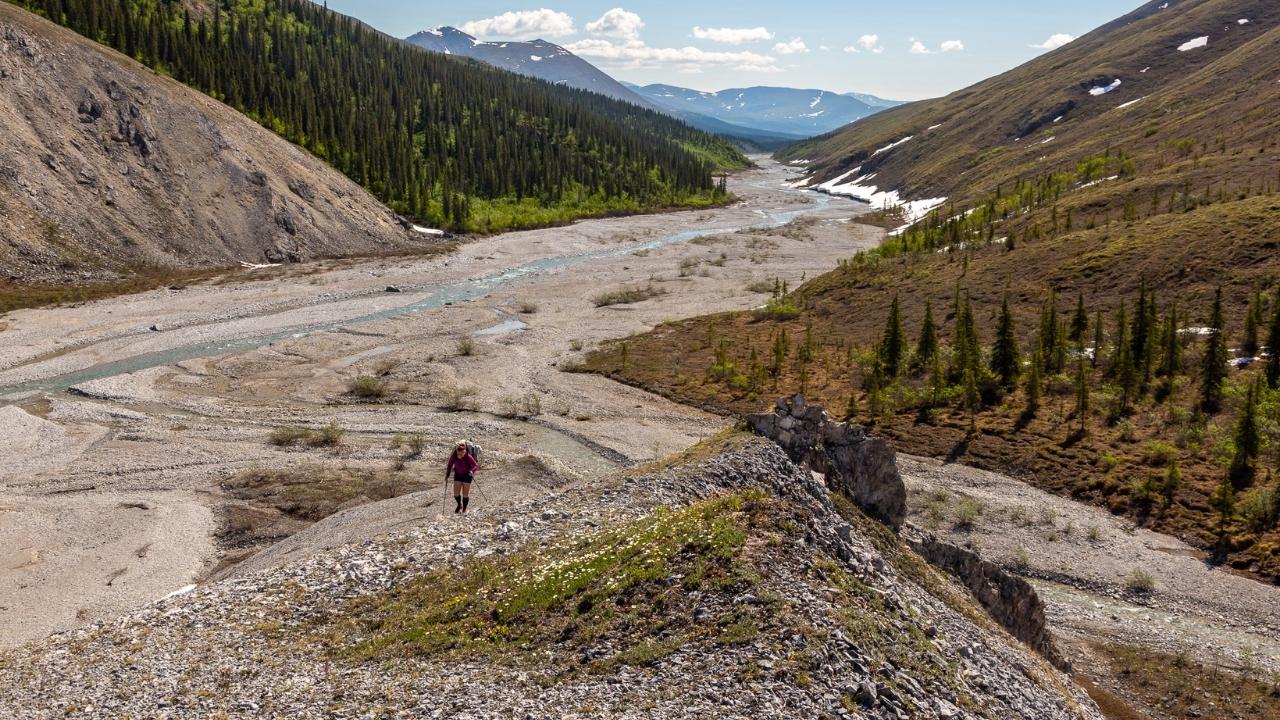
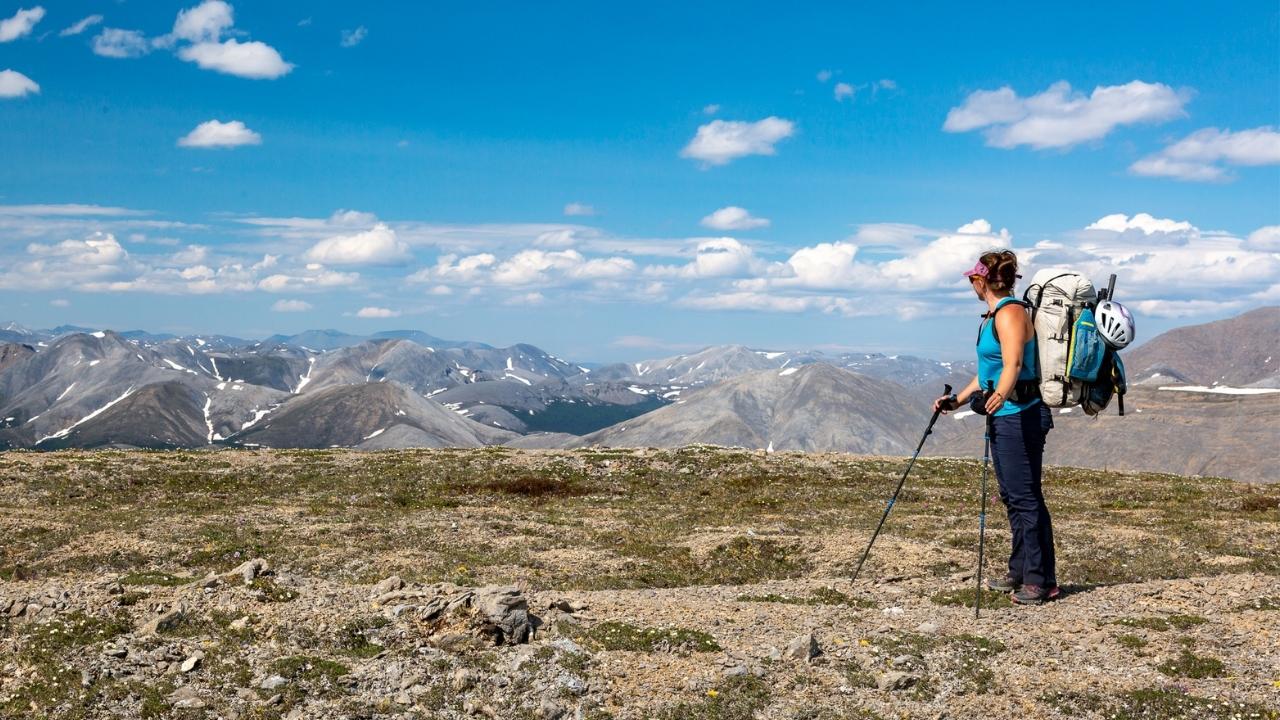
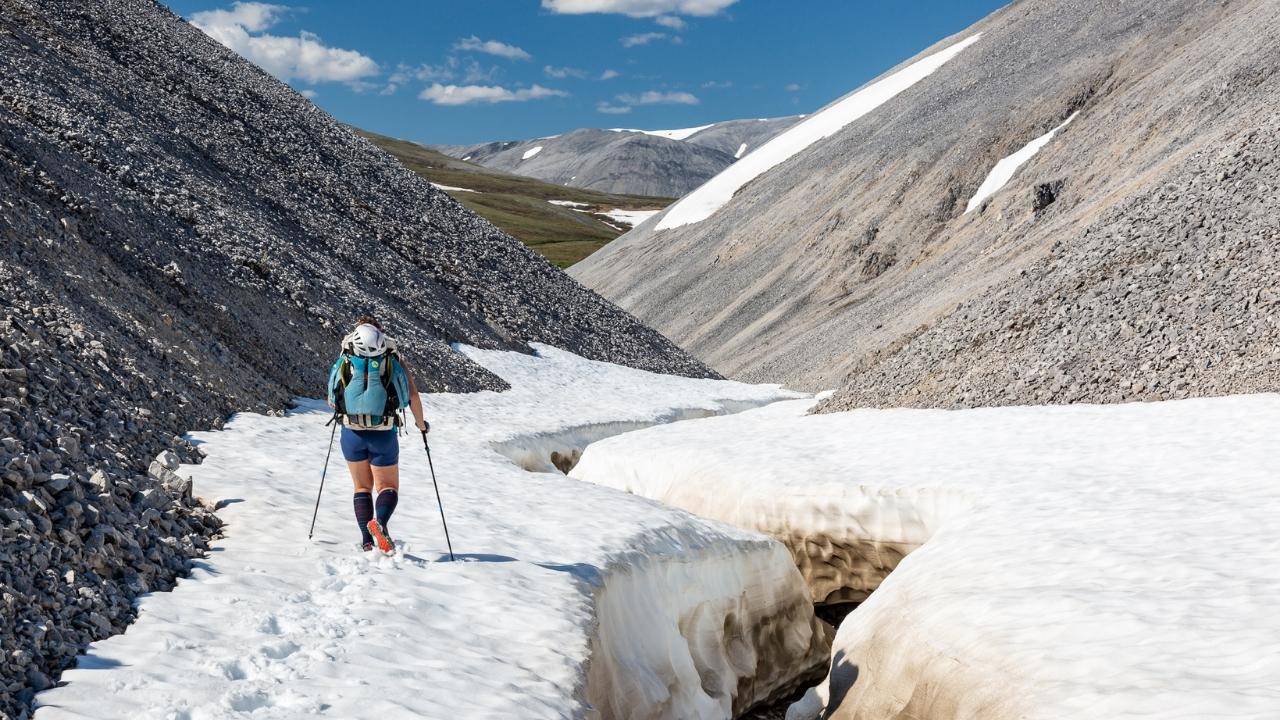
One example of playfulness happened during our four-day backpacking loop. We found some candle ice, which is a particular shape of ice that looks like sticks or candles all lined up. The ice was quickly melting in the early summer weather, and it was a lot of fun to feel and hear the ice breaking when I touched it. I loved the simple tactile experience of feeling the ice crunch and crumble under my fingers. You can see what I mean in this video from the trip. Moments like this one helped ground me and keep me present when my body was still working to recover from sickness.

In reflecting on these moments, I can see that those times when I didn’t feel playful or engaged, I was probably closer to my body’s capacity than I realized. Noticing my mood (and how often it changed!) was like a peek inside my system. When I was feeling closed off, it was a sign not to push any harder and instead to be sure to rest and fuel plenty. On the other hand, the moments when I was feeling more joyful were a good sign that I was at a comfortable pace.
We can think of awe as an antidote to nervous system stress too – when we’re able to pay attention to the beauty around us, our nervous system will read that as safety. And in moments of stress, if a glimmer of beauty or awe is available that might help ease the intensity of the moment.

Floating by a Baby Moose (and Other Critters)
We weren’t alone on our trip: some wildlife joined us during a couple of peaceful, magical moments.
One morning on the river near the end of our trip, we were in our tents and heard something loud walking (running?) down the riverbank toward us. CLOMP CLOMP CLOMP On high alert, we grabbed our bear spray and peeked outside.
But there were no bears! Instead, we spotted a momma moose and her offspring. They’d started crossing the river upstream of us, and the calf was walking awkwardly across the river, sometimes getting into water deep enough that it’s feet couldn’t touch the ground. Momma moose patiently nudged her little one along to shallower waters until they reached the shore together. You can watch the sweet baby moose in this video.
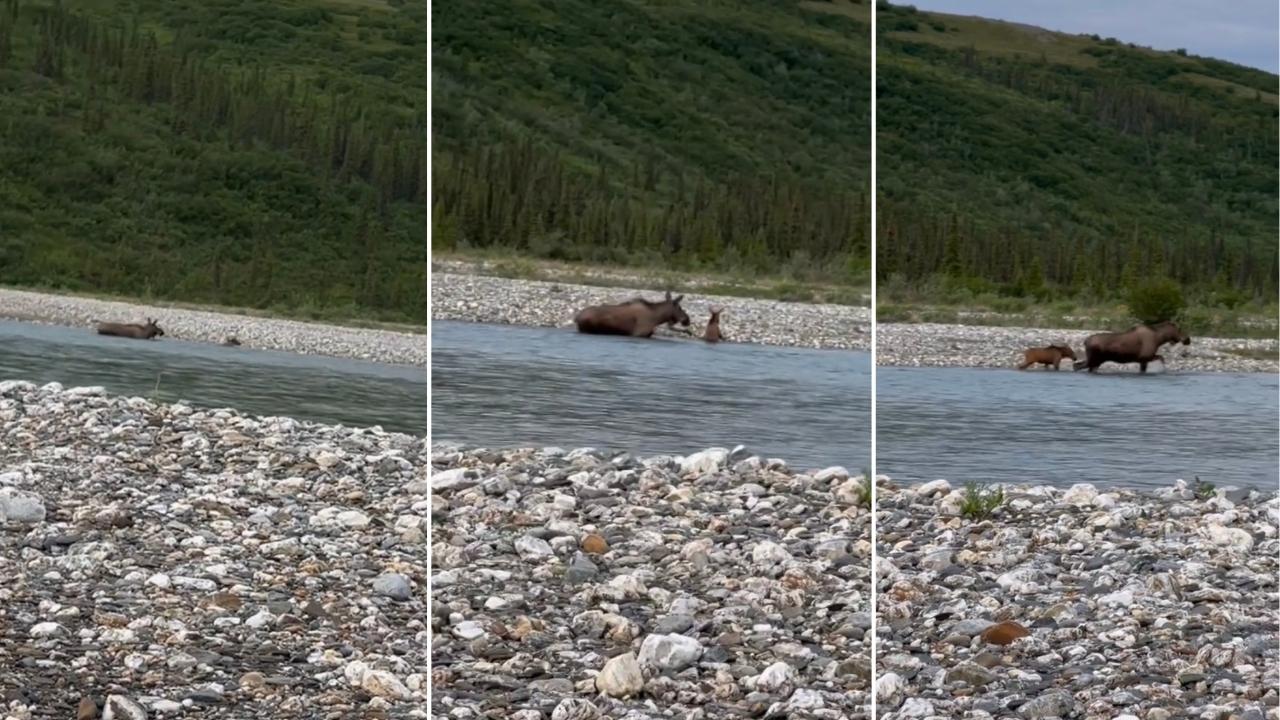
After this adorable moment, it turned into an ongoing joke during our packrafting float out on the Agi: we had been fighting the low water levels and just needed water deep enough to float a baby moose. The joke and the reminder of our baby moose friend helped lighten the mood during some potentially stressful moments of shallow floating.
Then, a ways downstream on the Agi, we noticed some big clumps of dirt along the riverbank. We started seeing more and more of them, which seemed strange. Then as we got closer we realized: they weren’t clumps of dirt at all, they were musk ox! We floated by a herd of about 20 of them on shore, including a couple babies, staring at us from underneath their long, scruffy fur.
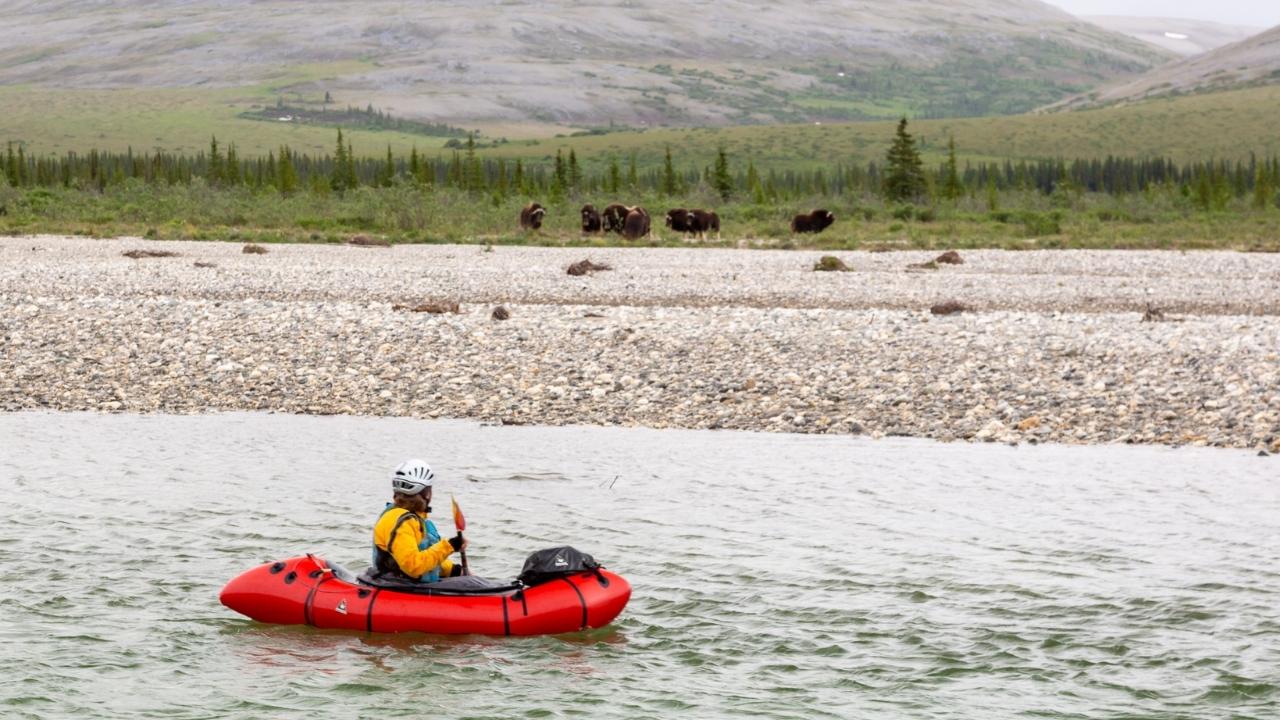

One last wildlife story happened on one of our sick days earlier in the trip, when we were inside our tent. Our InReach chirped when we received a message, and as it chirped we heard a strange rustle & splash from outside the tent. Sure enough, when we looked outside, we saw the hind end of a grizzly bear scurrying off. It must have been crossing the river on its way past our tent when it heard the InReach sound and took off in the opposite direction instead. We were amazed that this huge, majestic creature was so close by without us knowing, and it’s always amazing and humbling to wonder how often that happens without our knowledge of it. Spending all that time in our tents gave us a new perspective on how much wildlife might be around and simply out of sight.
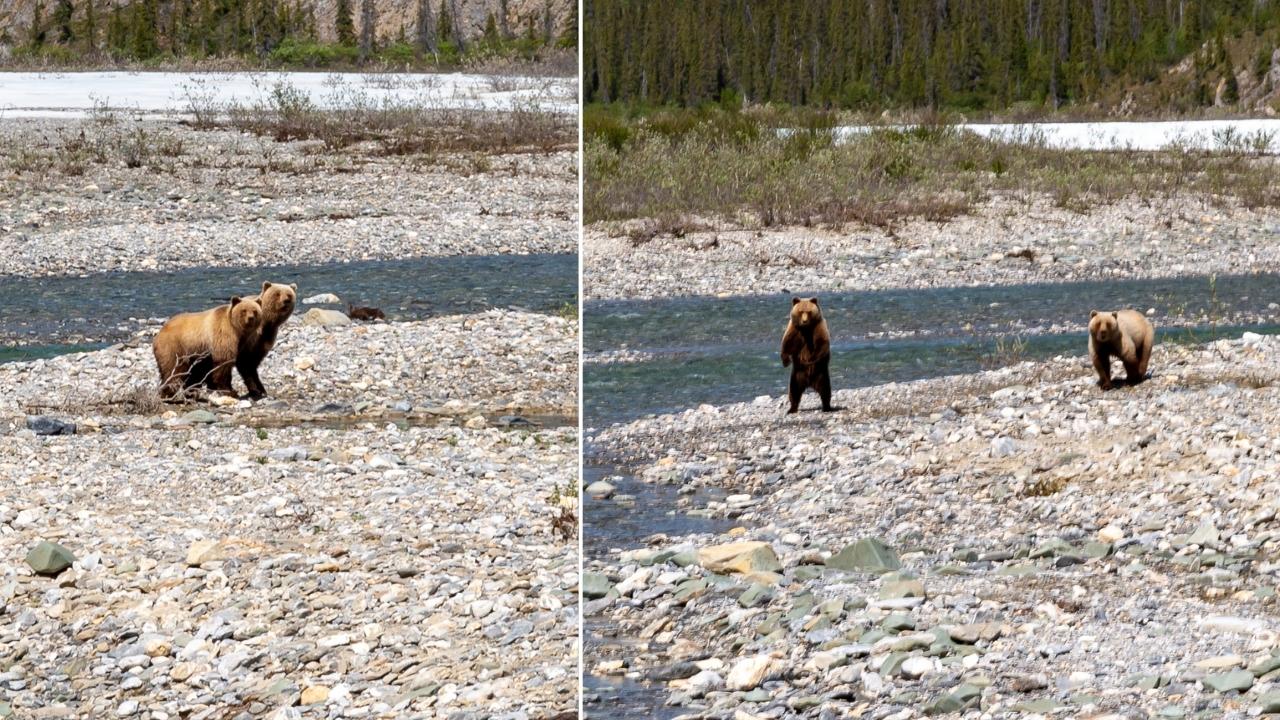
Final Thoughts
Moments like the candle ice and the wildlife sightings helped us zoom out, reminding us of the wonder all around us. These intimate moments were really special, and something we don’t usually get on backpacking trips where we’re moving quicker and covering more ground. And they were great opportunities to keep the mood playful and even silly.
Overall, even though this trip didn’t go how either of us expected, so many things made it such a special and memorable trip. The water we floated was some of the clearest, most beautiful water we’ve ever seen in Alaska. Plus, we enjoyed great walking when we were on dry land, too. The Baird Mountains are a really special part of Alaska, and we feel really lucky to have been able to spend time there. And I want to go back!
